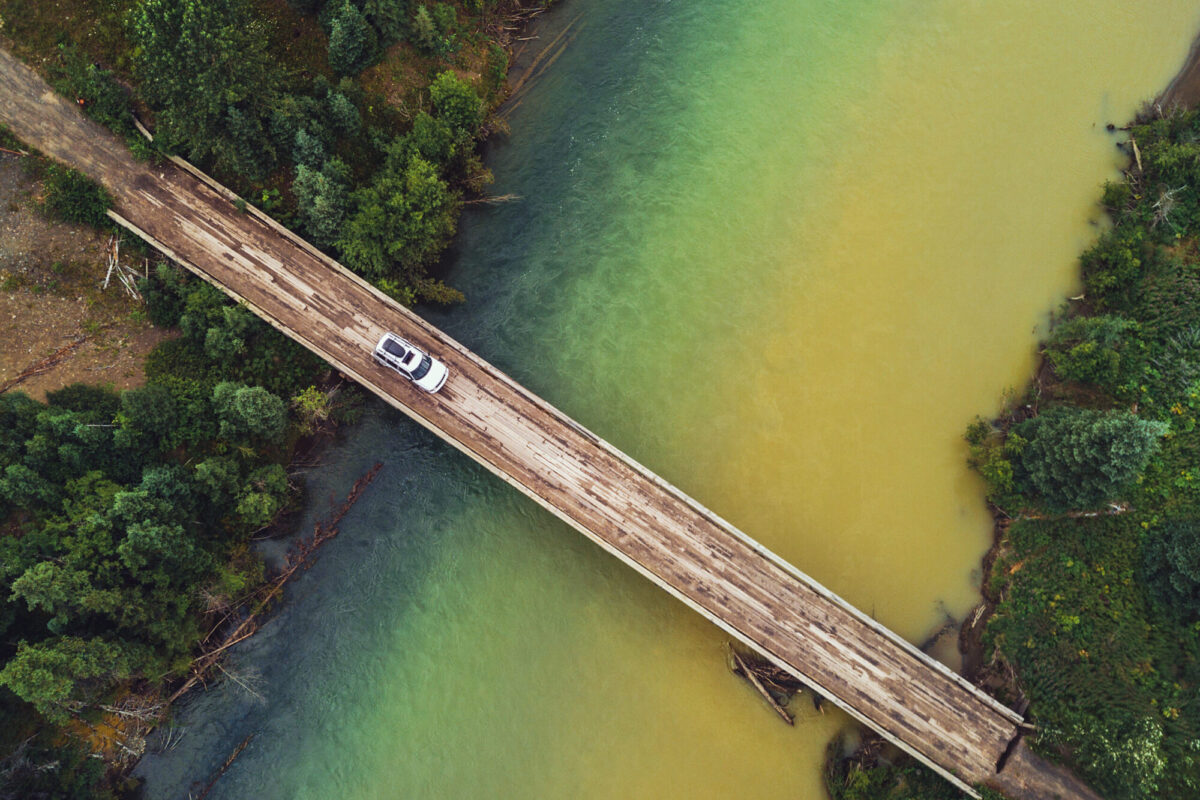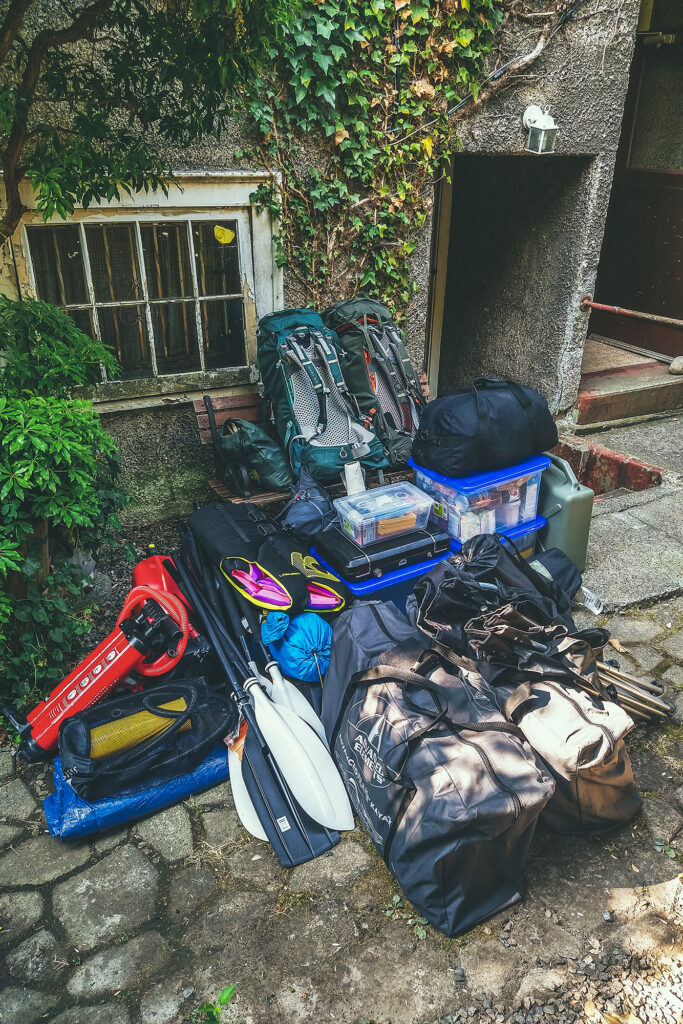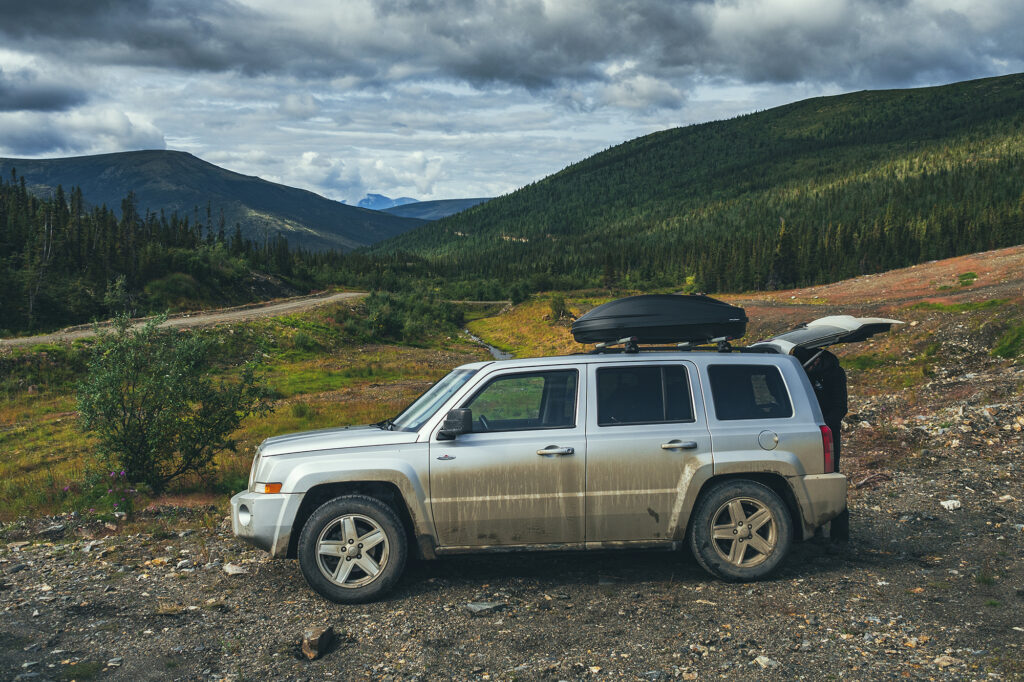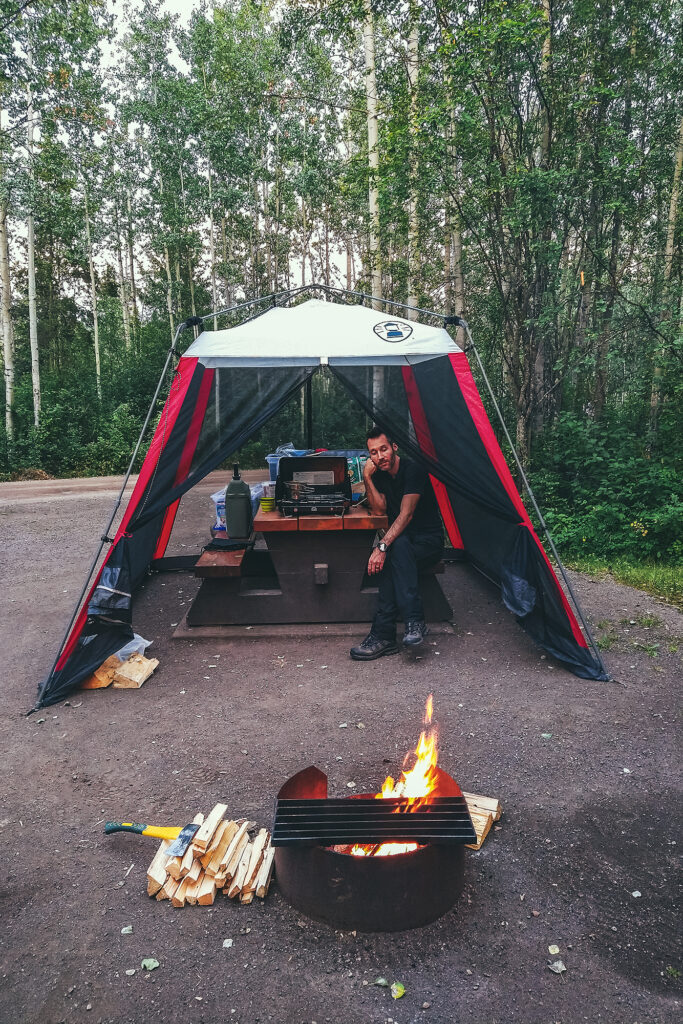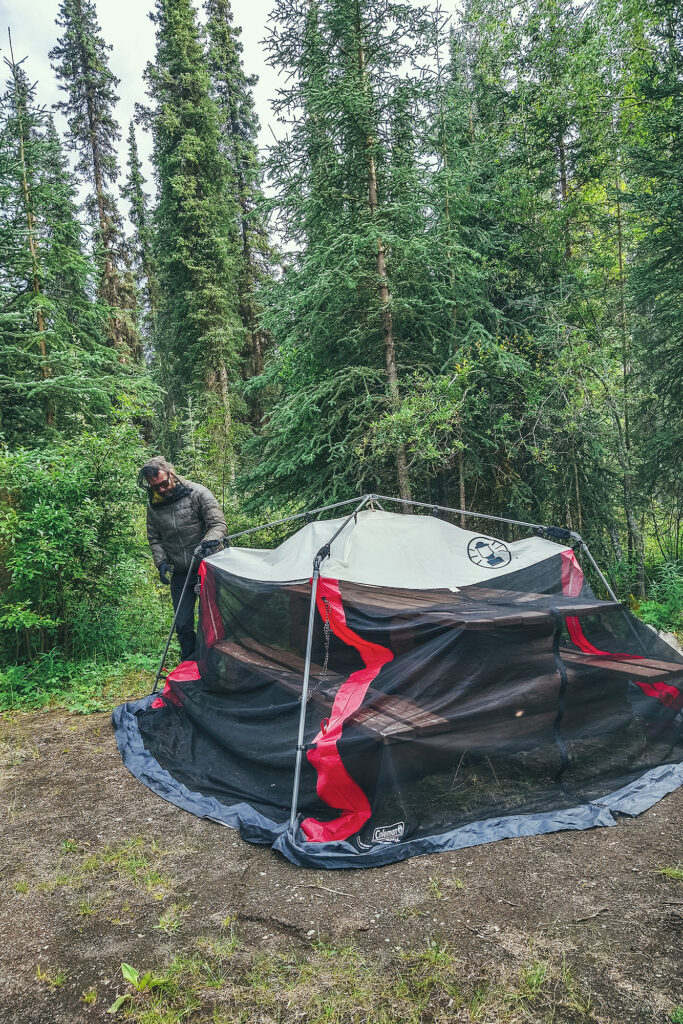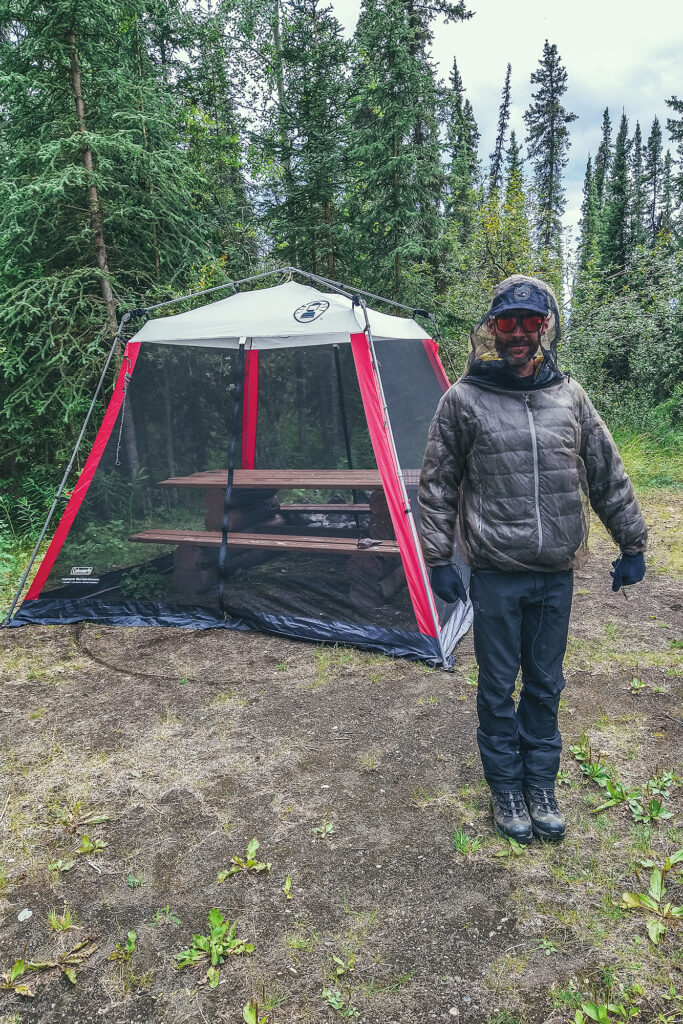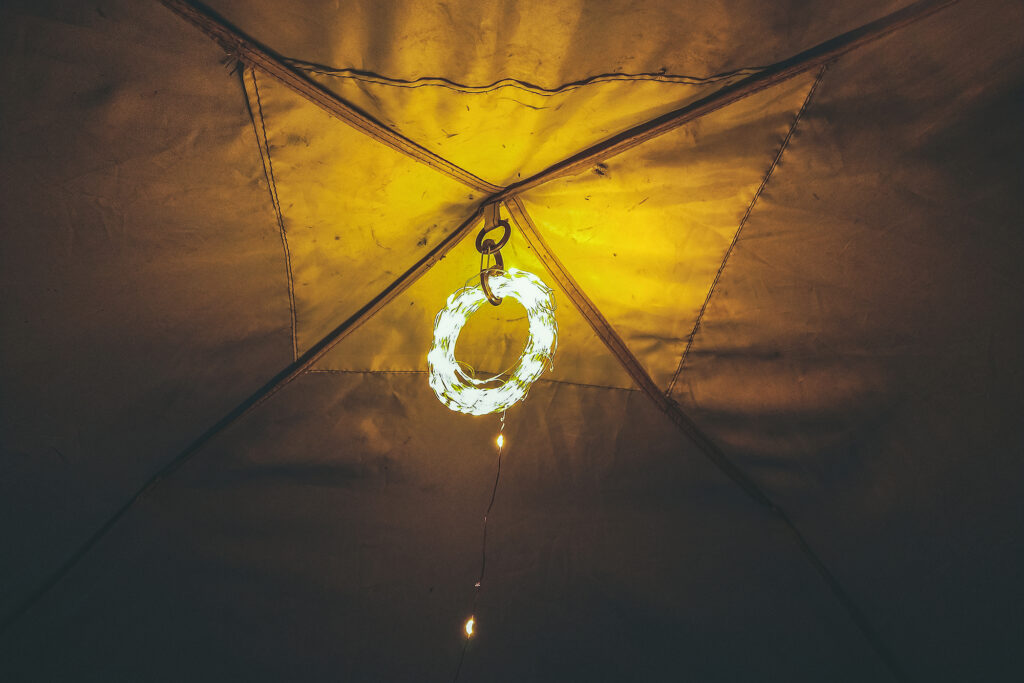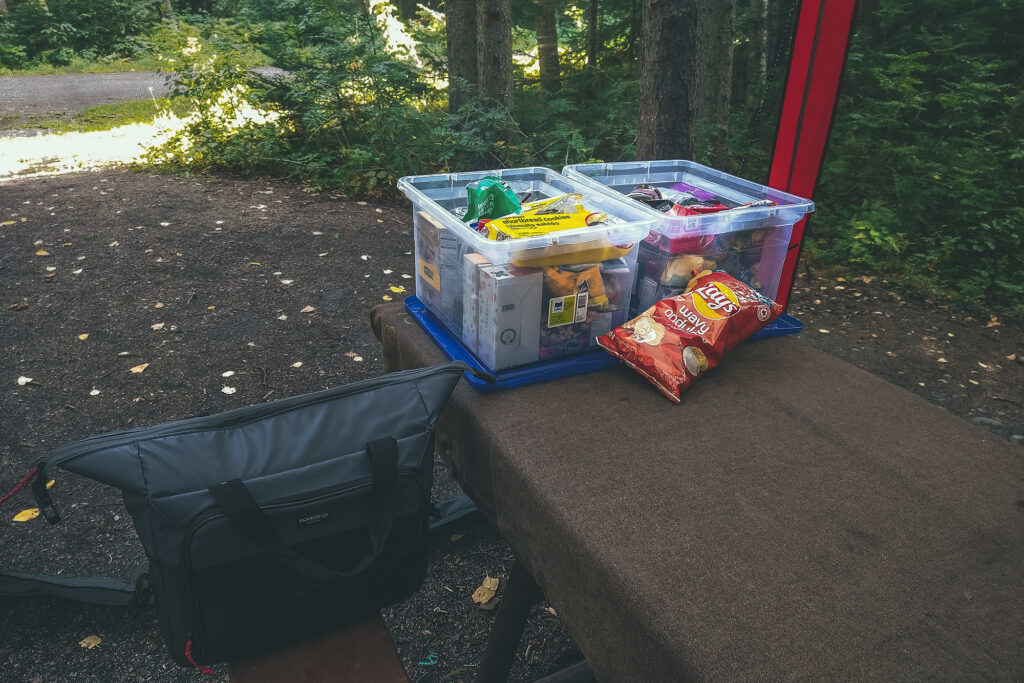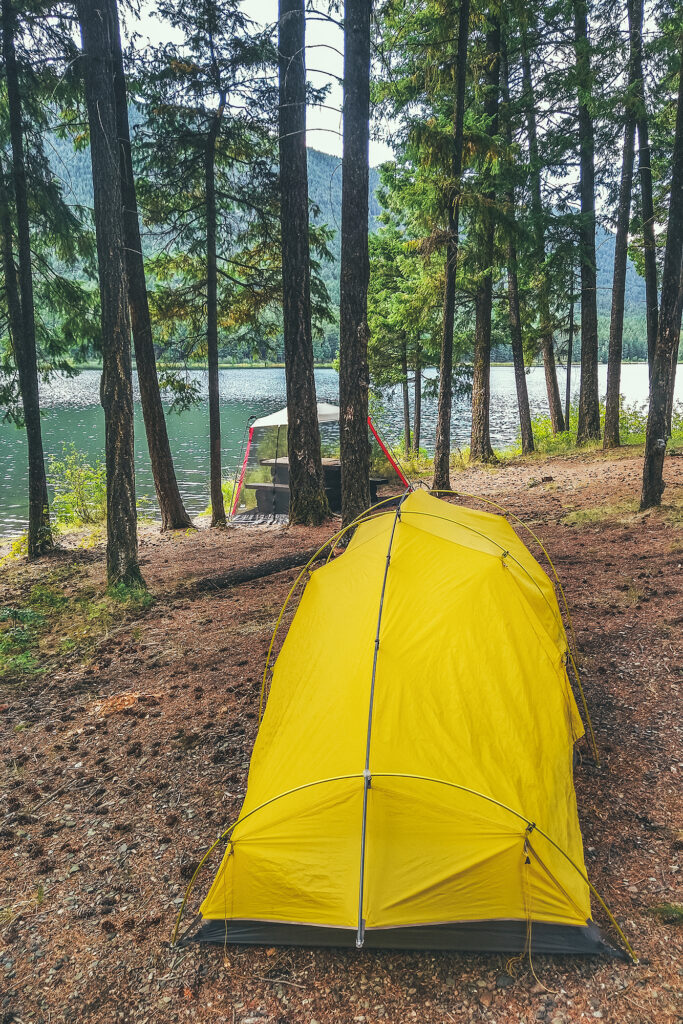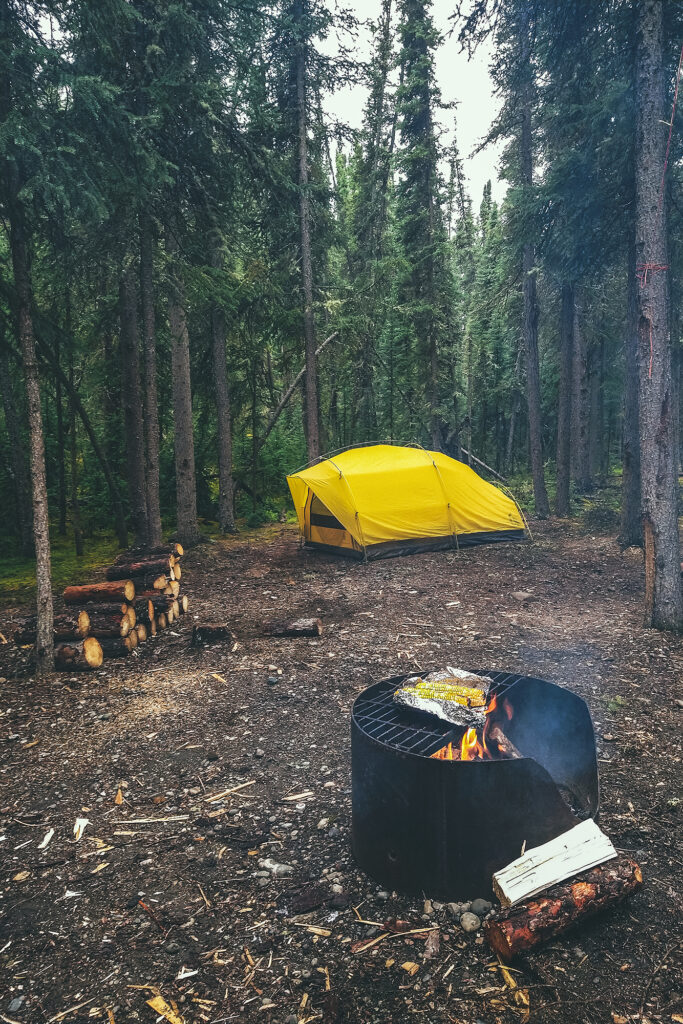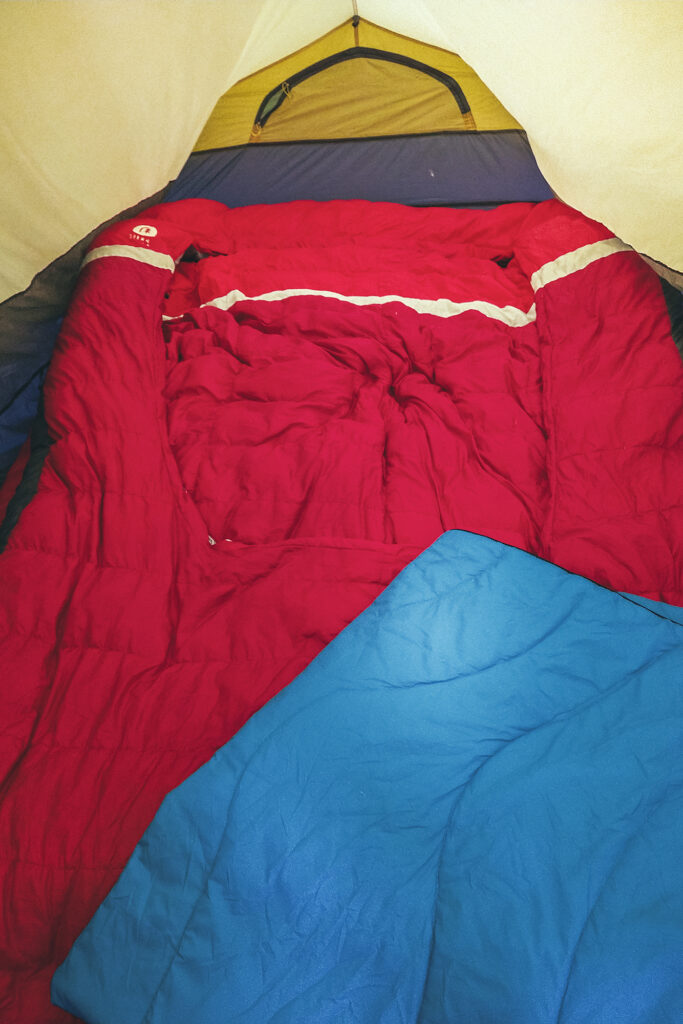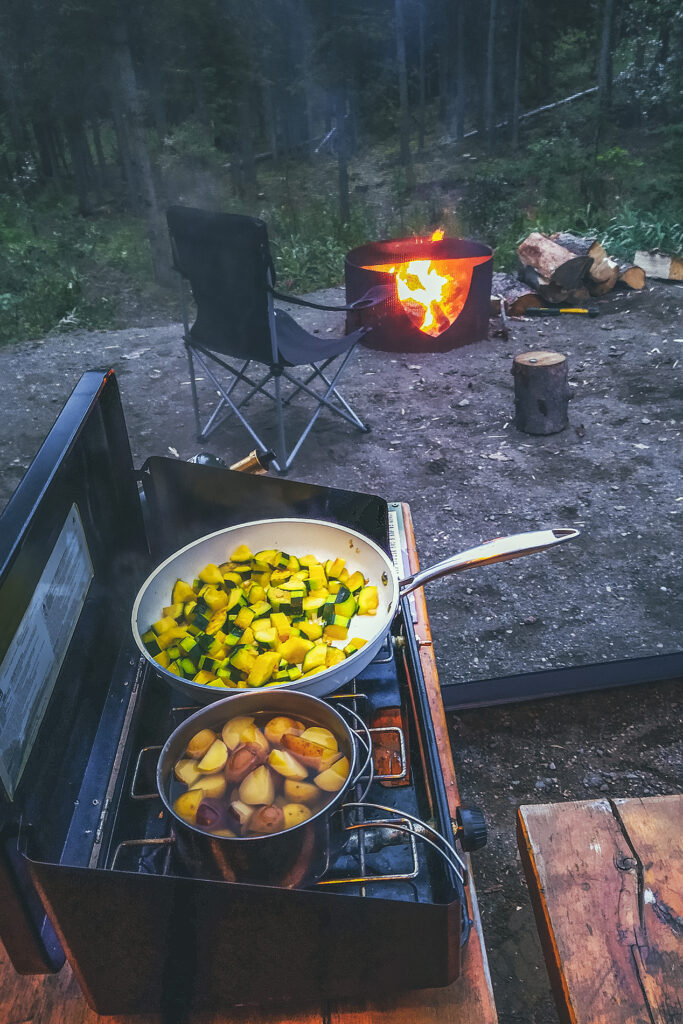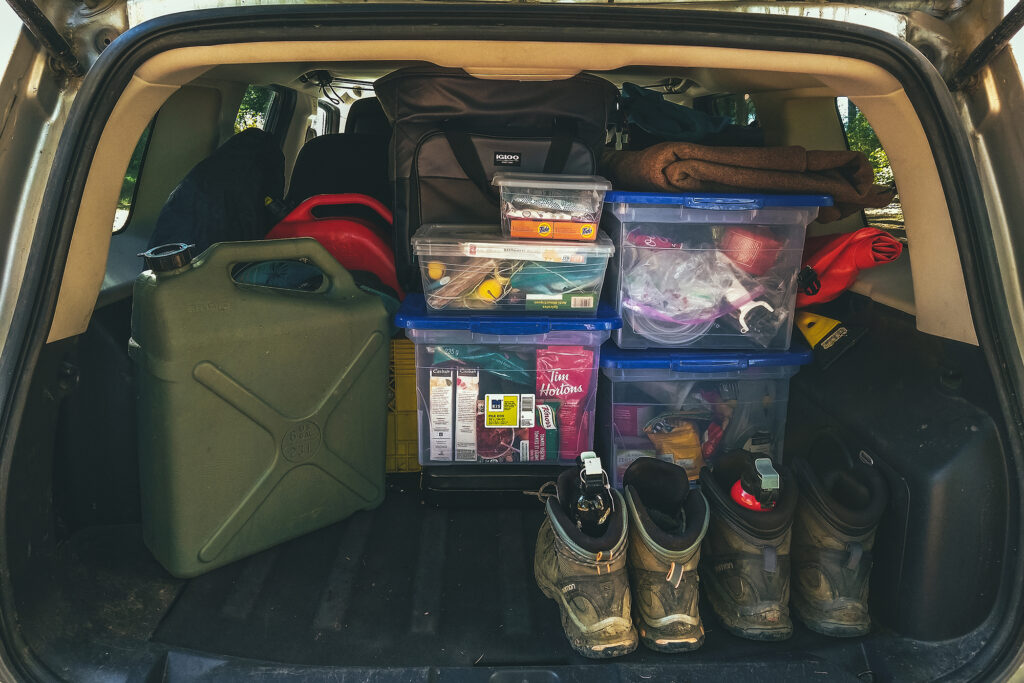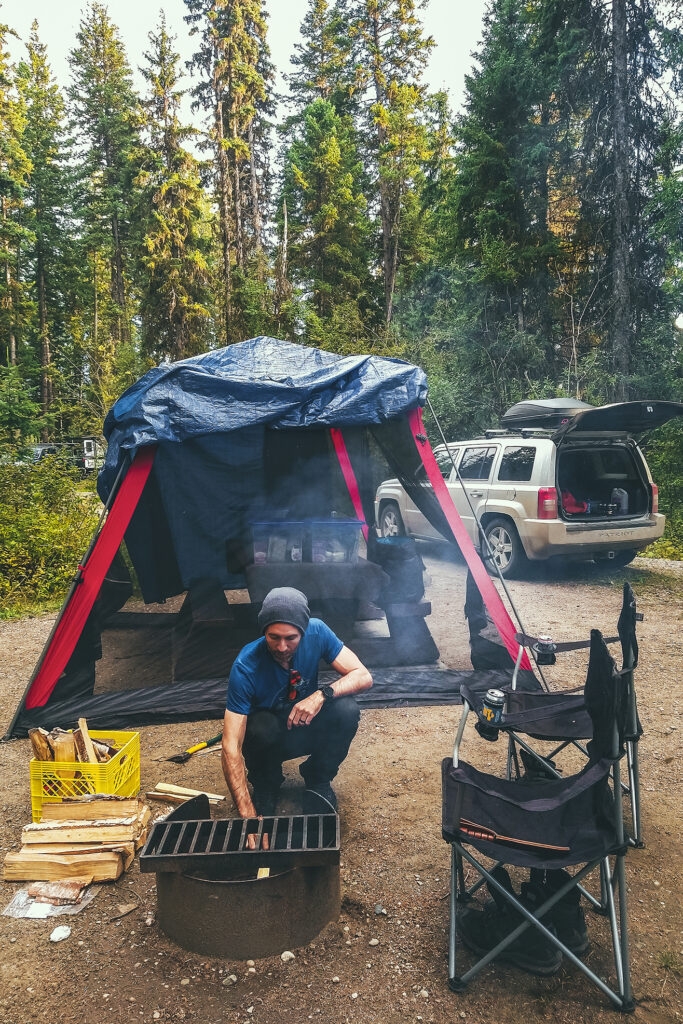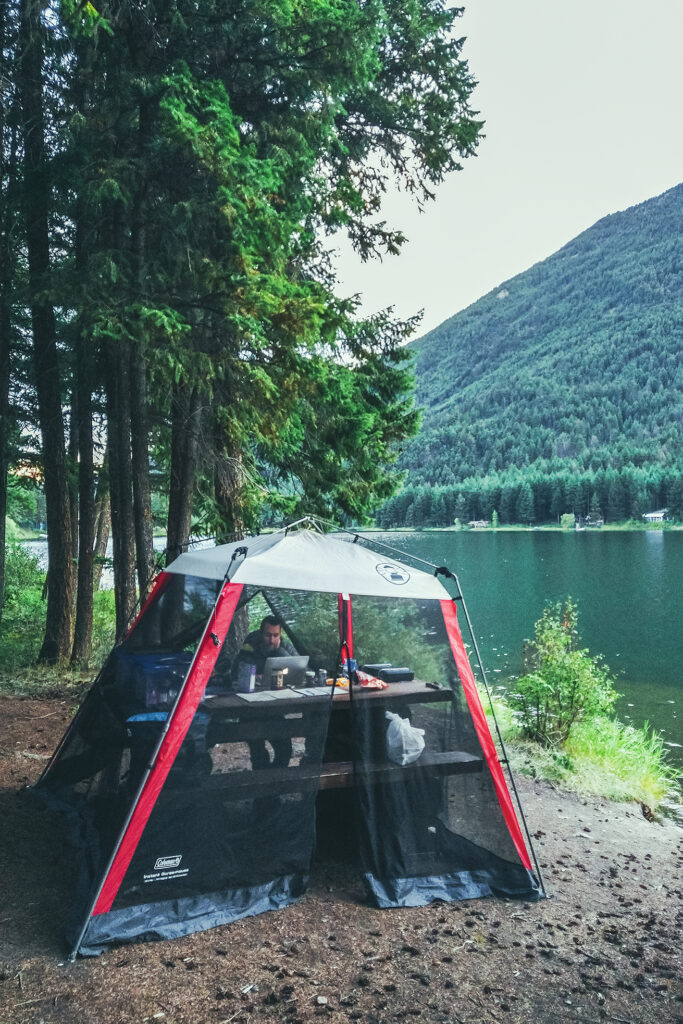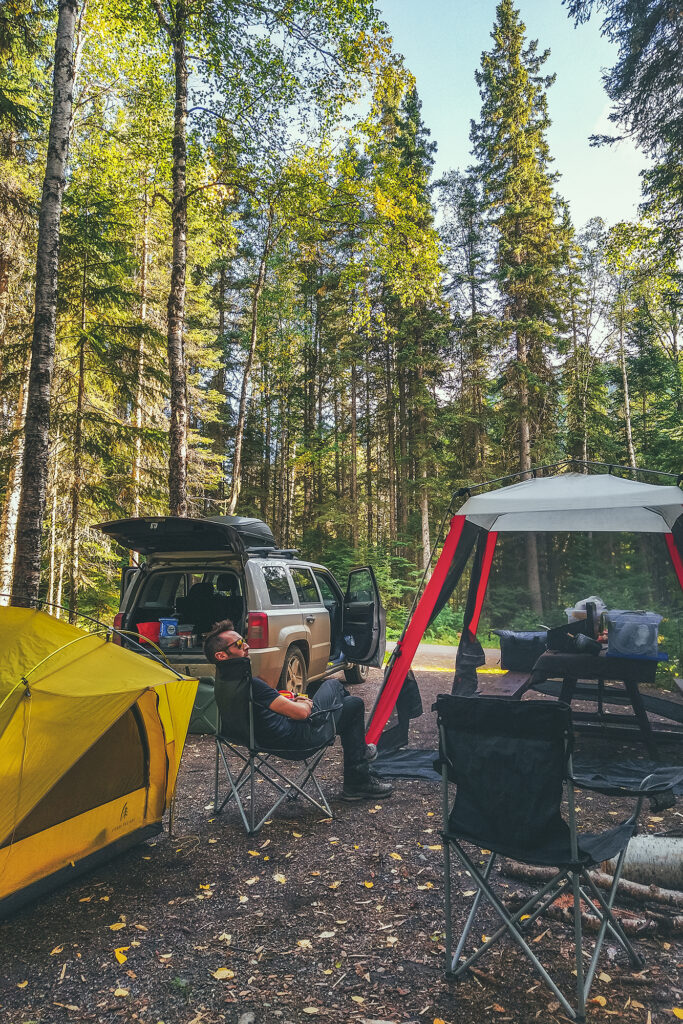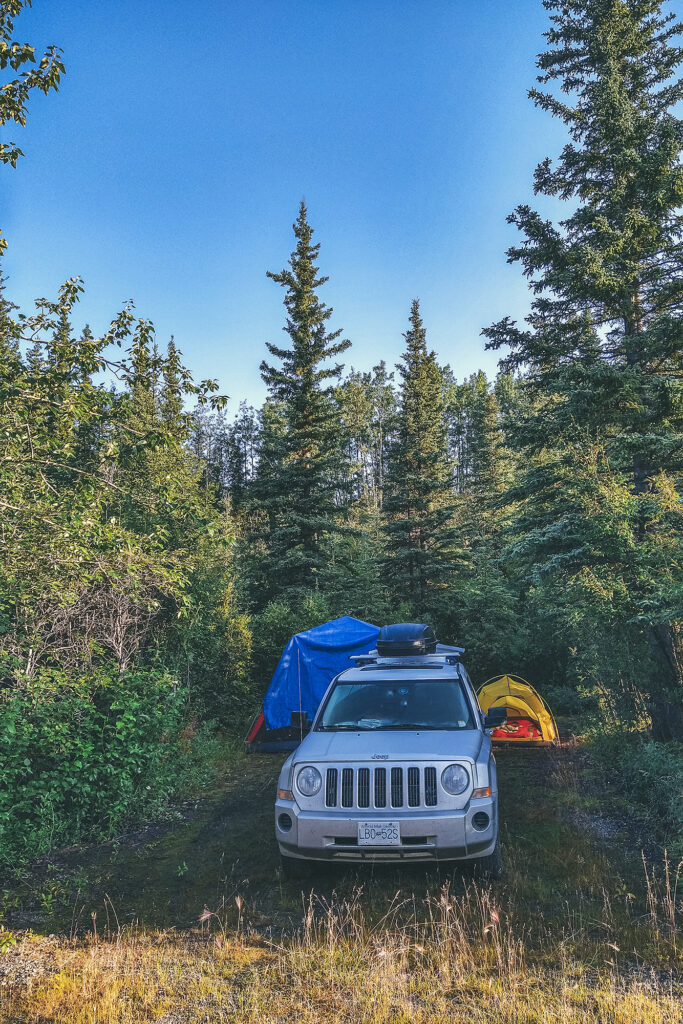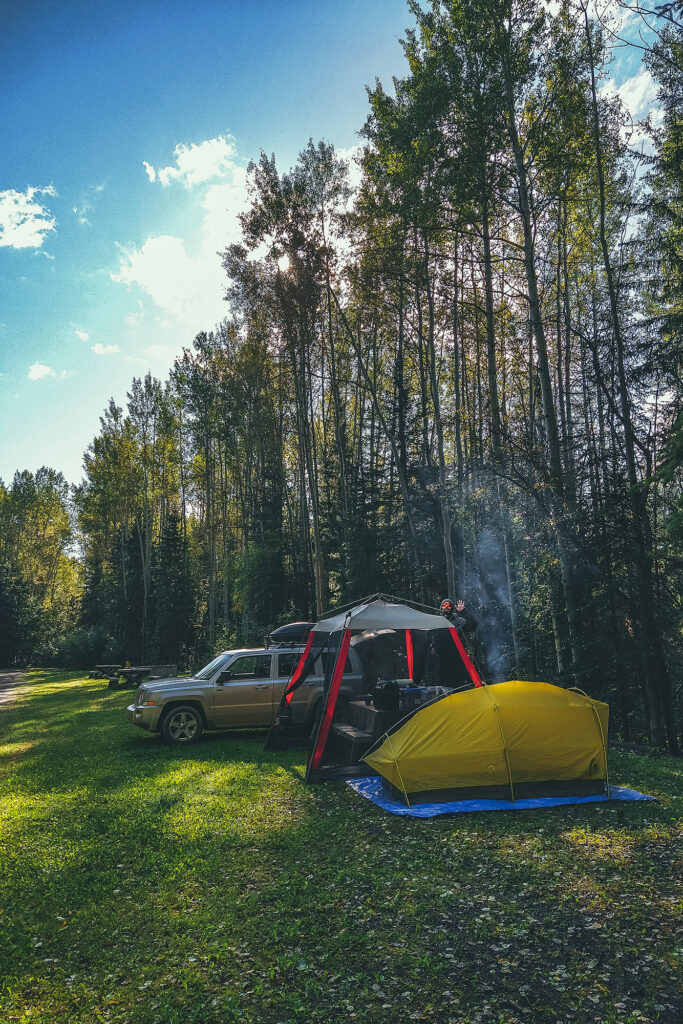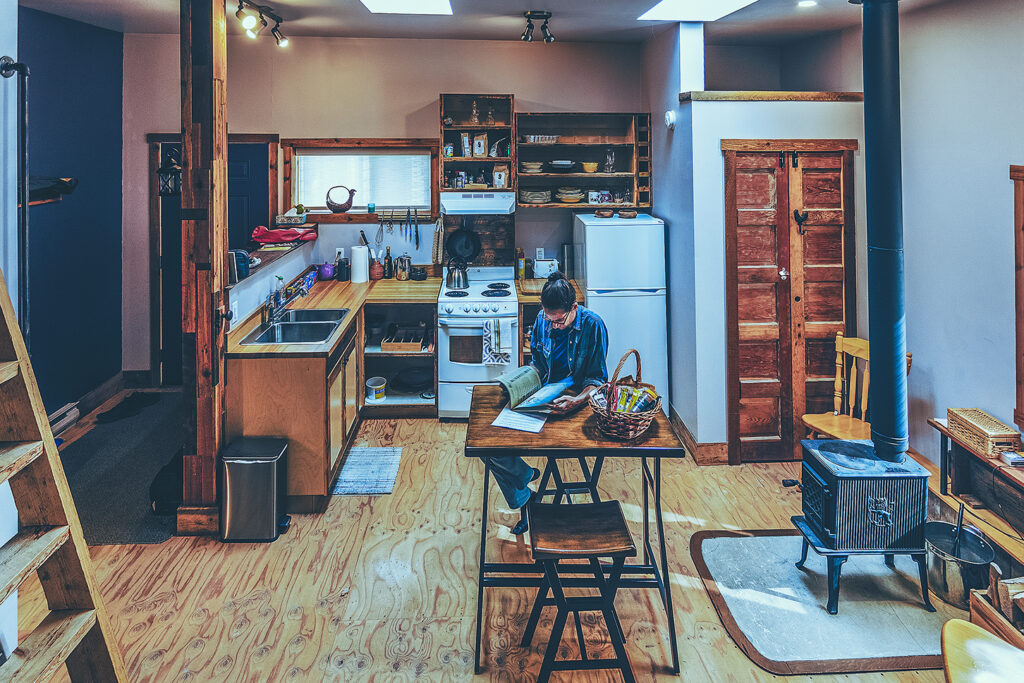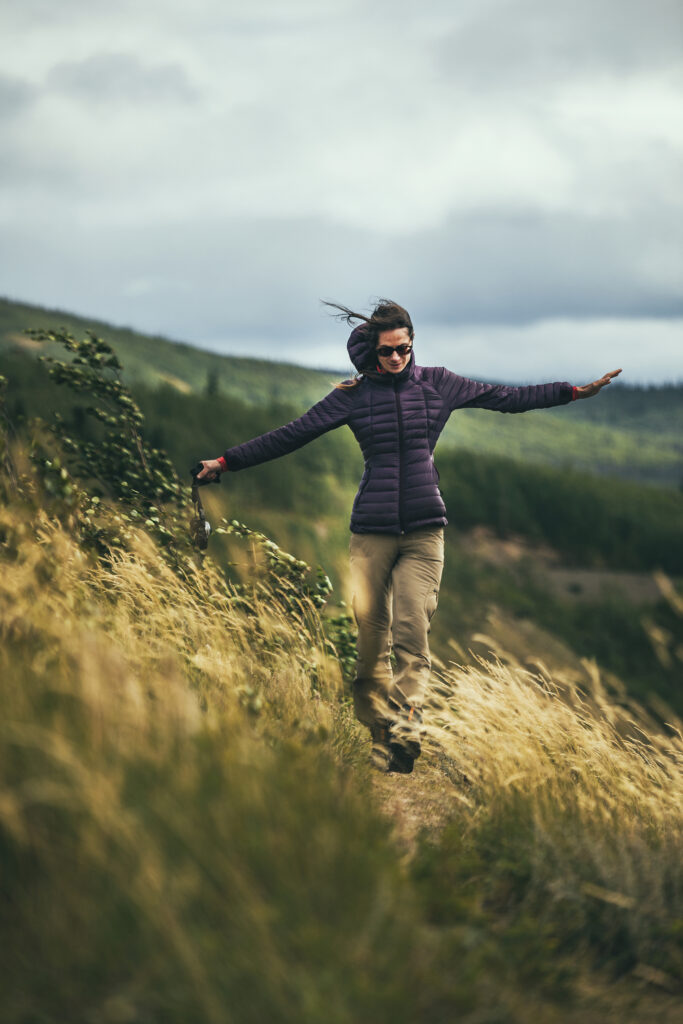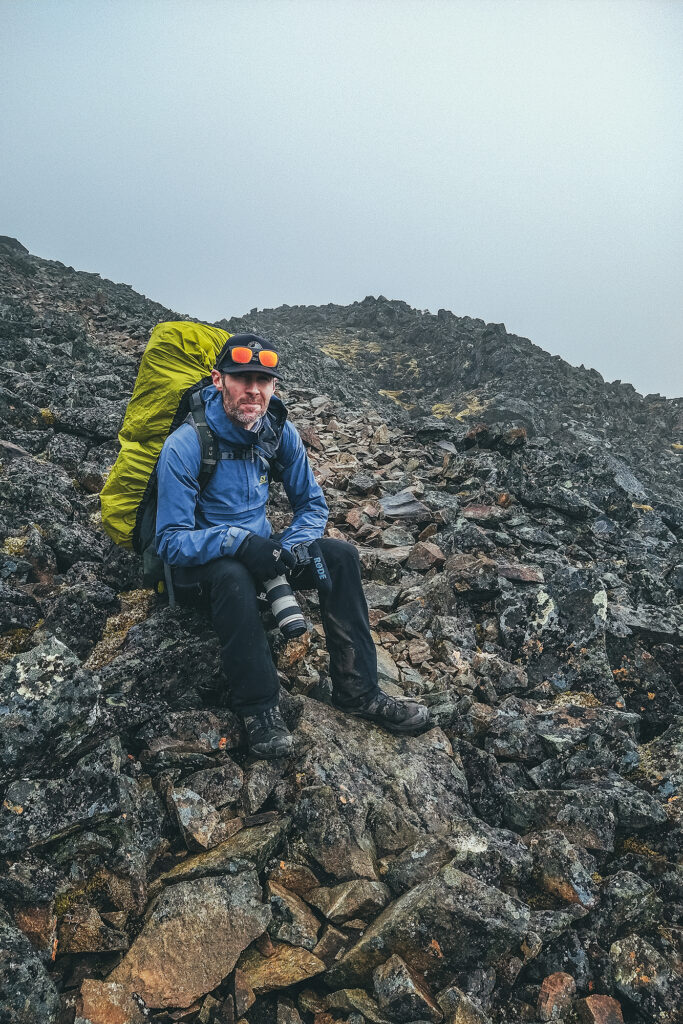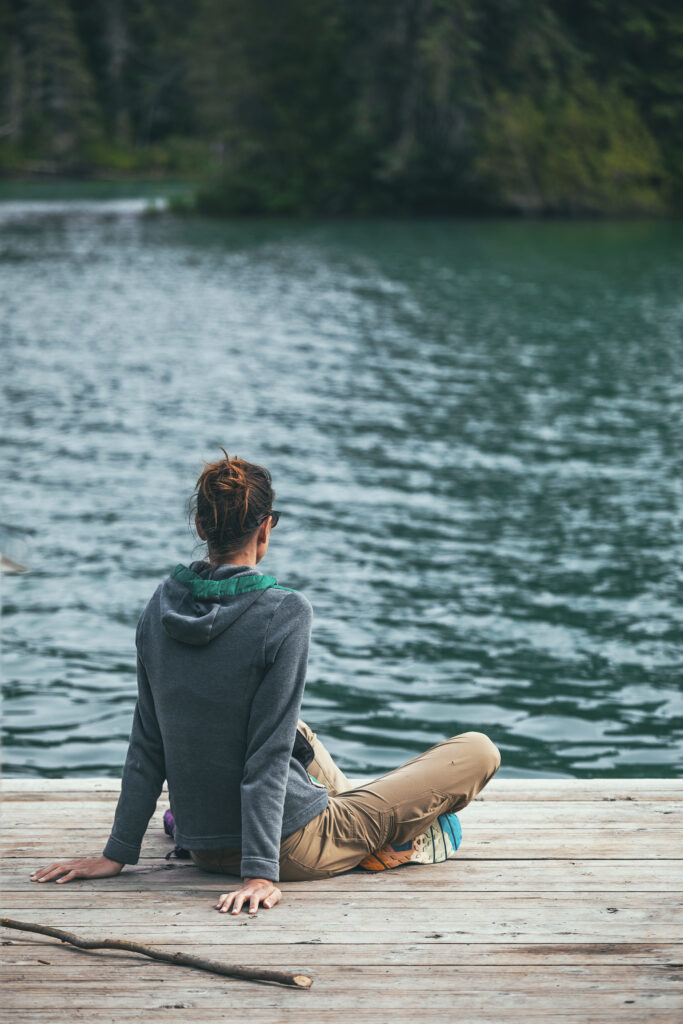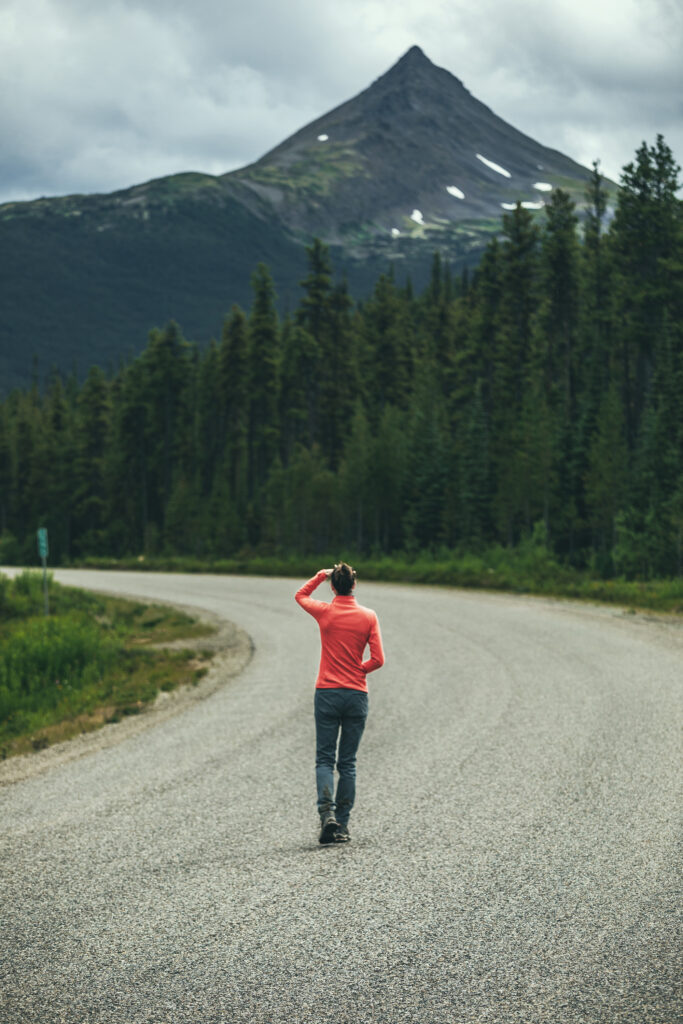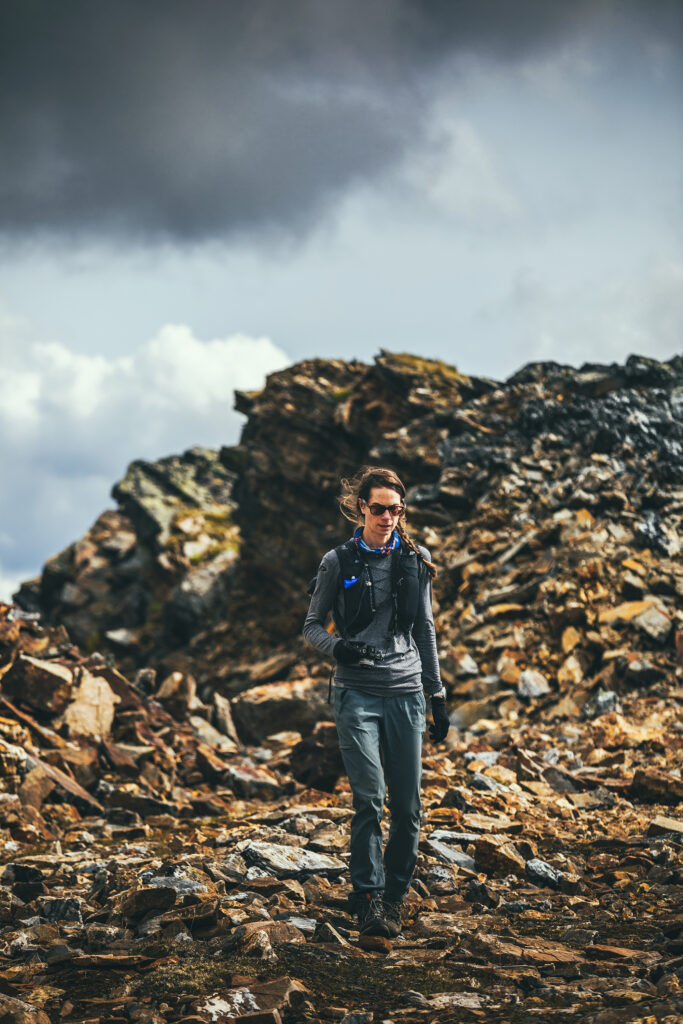Yukon had been on our list of places to travel to for a bit, and after a year of pandemic, and continued international restrictions, it seemed like the obvious time to take this trip.
At first, we researched campervan rental options, but looking to rent for over a month, it ended up being quite expensive. Since we were already equipped with all the appropriate camping gear, and had a solid vehicle to undertake this trip, we figured we could just car-camp our way through it, with a few airbnb/hotels here and there to reset.
As we had never gone on a road trip that long, we did take a look at our gear and made a couple of key additions.
Rooftop box – seemed like an obvious one, so we could pack everything comfortably in the car, especially since we wanted to take our two inflatable kayaks along. They didn’t fit in the box, but we kept them both behind the passenger seat and almost forgot they were there the whole time.
Screen House/Sun & Bug shelter – If we were going to be camping most nights, we figured we might still want to have some sort of roof over our heads as protection against the elements – namely bugs and rain. We found a Coleman Instant Screen house 10×10 on Facebook Marketplace for $100 and it turned out to be the best addition to our gear we could make. Very effective against bugs, a bit less so against rain due to its tapered shape, but we threw a tarp on top and we had a very decent (albeit not glamorous) rain shelter.
It was super quick to set up and take down, and fit over all the campground picnic tables. Once we got into our groove, it only took us a few minutes to take all the gear out and set things on and around the table, and regardless of where we were, we felt at home.
Brice had purchased a string of small usb-powered fairy lights (the kind you see in any “vanlife”/”camplife” popular IG account), which turned out to be very good for overhead lighting (we kept it rolled up and attached it to the roof of the tent, as stringing it around the sides just wasn’t something we cared to do every time we set up).
Food storing – we put all of our dry food in plastic filing boxes, easily stackable in the car. We had two boxes for food and one for cooking equipment. We also brought a cooler bag with us, but to be honest we didn’t need much cooling for most of the trip and ended up using it without any cooling packs or ice. It still kept things like milk and cheese a bit fresher if we consumed them quickly.
Sleeping Gear – we used more or less the same gear as when we took our trip through Patagonia. We’ve had our Sierra Designs tent for 5 years now and still love it. It’s easy to set up and a good size for two people without being too big. We had brought a second tent along which we ended up not using as it was a bit bigger and nights tended to be on the colder side. But since we had the room it was good to have a spare, in case anything happened to the first one. We were happy to see that our yellow tent was still very capable of handling rain and wind, although the elastic cordage that connects the poles together started to show sign of stretching. It didn’t prevent the use of the tent but made the setting up/take down a bit slower. (We’ve since sent the tent back to the company, and they replaced the cordage as well as the main zipper at no cost).
For mattresses, we initially had our two Tensor Insulated Nemo Pads – Brice has the wider/longer model. Mine unfortunately got a puncture along the way, but we had a spare mattress that I was able to use for the last 2 weeks of the trip. We also brought our Sierra Design Backcountry Bed 20 Duo, a double sleeping bag with pockets to fit both mattresses in, so you basically end up with a double bed while still using lightweight gear. I have to say I love this double sleeping bag, as it allows me to take advantage of all the body heat Brice generates (he’s like a human radiator), while I often have a hard time staying warm.
Cooking gear – Nothing fancy here, we used a basic two burner Coleman stove and our backcountry camping pots, but made the brilliant addition of a large non-stick ceramic pan, easy to cook with and clean. Keep in mind that doing dishes with cold water is kind of a nightmare, so an easy-to-wipe-down pan was the best thing we could bring along.
Speaking of doing dishes, we also had a collapsible bucket, something we’d gotten into a swag box a while back and hadn’t really used, but it proved to be very helpful for dishes or any sort of hand washing. For water we had a big 20-liter F-style jug, and drank all our water out of our Lifestraw Go water bottle, since those meant we could basically drink any water anywhere without boiling it first (many of the campsites advised to do so).
As much as we tried to keep our car tidy, and we did for the most part, there are always random bits and bobs that end up shoved in corners or in between boxes (like shoes especially, or bags of chips), but once we got the right set up for the boxes, we managed to keep things relatively in order.
Tent-camping in a different place every night still required a bit of work, even though we got pretty quick at it. We had to set up both tents, blow up the mats and fit them into the sleeping bag. Boxes of food and cooking gear needed to be taken in and out of the car multiple times between snacks, diner and breakfast, since you shouldn’t leave any food outside for wildlife to find. Brice would get a fire going every night and that’s always a bit of work to start and maintain.
And then there was the travel recording aspect. We took a lot of photos every day, and Brice would spend some time in the evening backing-up SD cards and footage and sometimes working on a few photos. I would write in a travel journal what we had done and places we’d been (crazy how fast you forget where you were a couple of days earlier when you’re traveling everyday), and spend a bit of time organizing photos for IG Stories. Don’t get me wrong, it was a vacation, but we didn’t actually spend a huge amount of time just chilling, there was always something to do.
Campgrounds & accommodation
As I mentioned in our itinerary post, there were loads of campgrounds along the way, and we were able to just drive into one and find a spot pretty much every night. I think traveling into the end of August certainly helped, as some spots might have been busier if we’d been there in July for example.
We were generally very impressed with the campgrounds. We found showers at a good number of them (usually the private ones, with prices per night around $26). All had a table and fire pit and the out-houses were always spotless and stocked with toilet paper (even at the most rudimentary rec sites). In the Yukon, Government campgrounds, which are peppered throughout the Territory, were only $12 a night, including firewood!
Since we stayed almost exclusively in official campgrounds, we had other people around us most nights, but only on a couple of occasions did we have loud neighbors. A big majority of the people staying in campgrounds were travelers in big RVs, a lot of them retirees enjoying the life on the road.
On the other hand, finding other types of accommodation proved to be a bit harder. We had booked three Airbnbs ahead of starting our trip, based on our initial itinerary – about 1 indoor stay per week, so we could take a break from the camping life and do things like laundry and sleep in a real bed.
When we tried to book a hotel room in Dawson City after our Tombstone trek, we found no availability anywhere (it was a Saturday night). And when I looked for a last minute Airbnb between Watson lake and Dawson Creek, the closest I only found were a couple of options in Fort St John – there were a couple of motel options but we ended up skipping those and splurging on a house stay instead. So the last-minute indoor options were a bit more limited and I was glad we booked the first three stays in advance, especially the night just before Tombstone.
Dressing for the Weather
Our friends Adele & Thierry, who had taken a similar trip a few years back, had warned us that they had gotten a lot of rain during their trip. It was a good thing to know about. Traveling in August, I was still expecting to experience a bit of summer, and packed a bunch of shorts and t-shirts – which I ended up not wearing. We had nice weather the first couple of days, but after Smithers, we got some pretty much 3 out of 4 days, and when it didn’t rain, it was often very overcast. Temperatures hovered around 14-16 degrees Celsius at the highest, and we had some drops into the single digits as we drove north into the Yukon. We even had light snow on our last day in Tombstone, on Aug 21st. The weather only got a bit better once we started driving back south, after Fort St John.
Needless to say, I was glad I brought all the layers along, puffy jacket and hat for warmth, goretex jacket and shoes for the rain, fleece layers, down to long johns for the night. And all the merino socks.
Some Trip Stats
37 days on the road
9,729km
1,082 liters of gas
31 nights under the stars ( 5 indoors)
24 campgrounds
9.5 propane/butane bottles
15 different animal sighting
1 cracked windshield
1 rainbow crossing
71 locally baked goods
